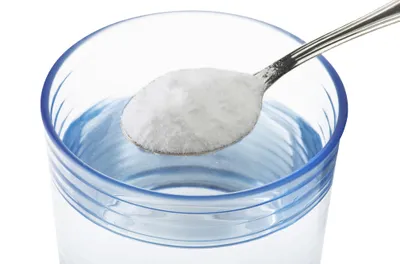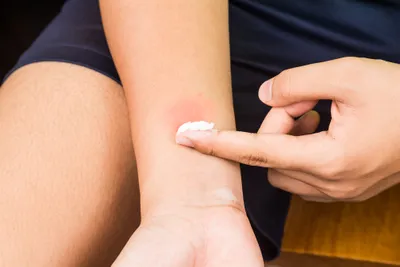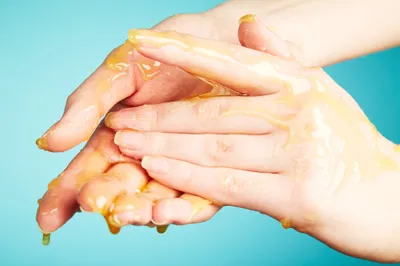People scour the shelves of drug and health stores looking for help for a variety of ailments. However, the pathway to relief from minor conditions could be sitting in the pantry or the bathroom cupboard. Old school natural remedies have been around for a long time and some of them just plain work. Deceptively simple and certainly easy on the wallet, here are the twelve best home remedies for minor aches, pains and irritating conditions.
These tips are not meant to replace medical advice. If you feel very unwell, especially for longer than 1- to 2-days, please contact your healthcare professional.
1. Witch Hazel for Pain and Itching Relief
Witch hazel is like a gentler version of rubbing alcohol or hydrogen peroxide. It can be used as a skin toner, but it also has amazing anti-itch properties and provides pain relief. This makes it great for cuts, stings, insect bites, scrapes and abrasions. It also helps with healing from bruises and takes the swelling down.
Witch hazel is great for kids for relief from those conditions because it does not sting as much as rubbing alcohol, which decreases the negative experience associated with first aid for some children. Witch hazel has long been used as an effective remedy for relief from the pain, itching and swelling from hemorrhoids. Dabbing witch hazel on a tissue for application is a cost-effective homemade version of anti-hemorrhoidal wipes.
2. Peppermint Tea for Gas and Bloating
If your stomach is in knots, or if that bloated, gassy feeling just won’t leave you alone, try brewing some peppermint tea. Peppermint herb is known to slow the spasms of the intestines and colon, which can provide relief from diarrhea and cramping. It is purportedly soothing to the stomach and can help alleviate gas.
Peppermint tea also freshens the breath and provides a good source of fluid, minus the dehydrating effects of caffeine or alcohol. It has zero calories as long as you skip the sugar—so get sipping. Bonus: Mint is very easy to grow in a garden so relief could be found with a snip of some herb shears.
3. Epsom Salts for Muscle Aches
There’s a reason why your massage therapist suggests soaking in a tub filled with warm water and Epsom salts. They are extremely effective for relieving muscle aches and pains beyond what a tub of plain bath water and bubbles can achieve.
Epsom salts also help reduce swelling by decreasing inflammation. This makes them another great bath-time pick to help speed up the healing of bruises, cuts or scrapes. They are inexpensive, found in just about every drug store, and you get a large quantity per bag or carton. Start filling the tub!
4. Chocolate for a Cough
It is pretty much universally accepted that chocolate is good and coughs are bad. But what if the goodness (and deliciousness) of chocolate could help alleviate that cough? It turns out this is may be true. WebMD reports that the compound, theobromine, found in chocolate is effective in suppressing tickly coughs, perhaps even more so than regular cough drops or cough syrups.
If nothing else, it will be better than consuming codeine, which is often used in cough syrups to suppress coughs. As far as lozenges go, many have sugar, and often those suffering from persistent dry coughs would rather get their sugar from delicious, indulgent chocolate rather than an overly sweet cough drop.
5. Apples for Tummy Troubles
Ever chat with a friend who’s no-fail stomach (or hangover!) cure includes eating an apple? If that sounds like an unlikely antidote consider that apples, like bananas, are a good source of pectin. Pectin helps to break down and flush away various food particles that could be irritating the stomach.
While apples are good, sipping apple juice instead could make stomach ailments, especially diarrhea, even worse. That’s because of the sugar content of juice, which can lead to more diarrhea. And if apples tend to be the cause of an upset stomach – try them cooked, not raw. An apple a day may really keep the doctor away.
6. Salt Water for Sore Throats
If you feel the pain and throbbing of a sore throat coming on, skip the throat lozenge and head for the kitchen instead. Dissolving plain table salt into hot water produces a very effective throat rinse that should be gargled for at least 30-seconds. For a guide to quantities, try a ¼- to ½-teaspoon salt in 8-ounces of warm, not boiling water.
The rinse can potentially kill bacteria in the throat that are making it sore. Gargling with the rinse may also remove some mucus or other secretions to provide greater comfort. Remember not to swallow it (salt water, ugh) and try to perform this practice as soon as you feel the sore throat coming on for optimal effectiveness.
7. Lavender Oil for Sleep
Sachets of dried lavender tucked in between the sheets in linen closets certainly make them smell sweet, and can be effective in repelling moths and other insects. But that’s not the only reason why this habit has been practiced for centuries. Studies from the Mayo Clinic show that lavender is effective at relieving headaches and anxiety, as well as promoting deep and relaxing sleep.
Lavender oil is a concentrated form and so it might be easiest to derive the benefits in this form rather than dried. The oil can be indirectly inhaled, or added to unscented lotions and rubbed on the skin. The oil can also be added to a vaporizer or placed on some cotton balls and left on a bedside table.
8. Baking Soda for Insect Bites and Removing Splinters
Baking soda is another substance with a variety of amazing uses. You may know that it’s great for whitening teeth and deodorizing your fridge, but also that it is simply wonderful in helping remove splinters? Simply make a paste of baking soda and water and apply it to the area around the splinter. Wait for about 15- to 20-minutes and then use tweezers to remove the splinter. The baking soda softens the skin around the splinter, causing the splinter to poke up, making it much easier to quickly remove.
A paste of baking soda and water is also effective in relieving the pain and itching from insect bites and stings. After icing the area, pat dry and apply the paste for as long as tolerated. All this and you can bake cookies with it too—pretty amazing!
9. Olive Oil for Whiter Teeth and Better Breath
This remedy is called oil pulling and it can be performed with any of the high-grade, pure oils, from coconut to olive and sesame. This tip involves gargling with about a tablespoon or so of the oil. The ancient Ayurvedic method involves doing this for 20-minutes, which may not be possible for everyone.
Bottom line is that the practice has been associated with whiter teeth, reduced gingivitis, and fresher breath. It also moisturizes your lips! Some claim that oil pulling has additional health benefits, but there are no studies to prove it. Still, if you are interested, give it a go. The worst thing that could happen would be you craving some focaccia bread to go with that EVOO….
10. Penaten Cream for Acne
This one is almost an urban legend, a tip whispered at summer camps and in college dorms. It involves dotting that thick, sticky Penaten diaper cream on to pimples in an attempt to shrink them. Does it work? And if so, why?
It turns out there may be some truth to this practice. Penaten cream contains zinc oxide, which is effective in soothing diaper rash and pimples alike. It can also be used to treat adult rashes, skin irritations, eczema, and even burns. Another bonus is that the powdery fresh smell is actually quite nice.
11. Eucalyptus Oil for Colds and Bronchitis
Steam rooms, spas, yoga studios and diffusers have got it right—eucalyptus smells amazing and it immediately conjures up feelings of relaxation and well being. Plus, there’s a reason that Vicks Vaporub has long been a go-to to help with a cough or cold. The smell of eucalyptus helps calm coughs and opens up nasal passages and tight chests.
To use eucalyptus oil, add a few drops to a bath or place in an open container in the shower and allow the aroma and steam to fill the room. You can also dab a small quantity of diluted eucalyptus oil onto the skin on the chest or underneath the nose. It will help clear breathing and open up the chest.
12. Honey for Wound Healing
Sure, honey is great in lemon tea for soothing a sore throat and a cough. And of course it’s delicious on chicken wings and on toast. However, honey also has a wide range of other therapeutic properties and uses. According to WebMD, one of its best known and longest-running applications is for wound healing. Honey is also helpful in alleviating the pain and discomfort associated with mouth sores caused by radiation treatment as well as healing burns.
There is some evidence that it can also help regulate blood sugar and cholesterol in people with diabetes. This natural compound is a marvel even though it’s often pushed to the back of the pantry. So it’s time to dust off the honey dripper and include a lot more of this liquid gold in topical uses, as well as simply consuming it for overall health.















